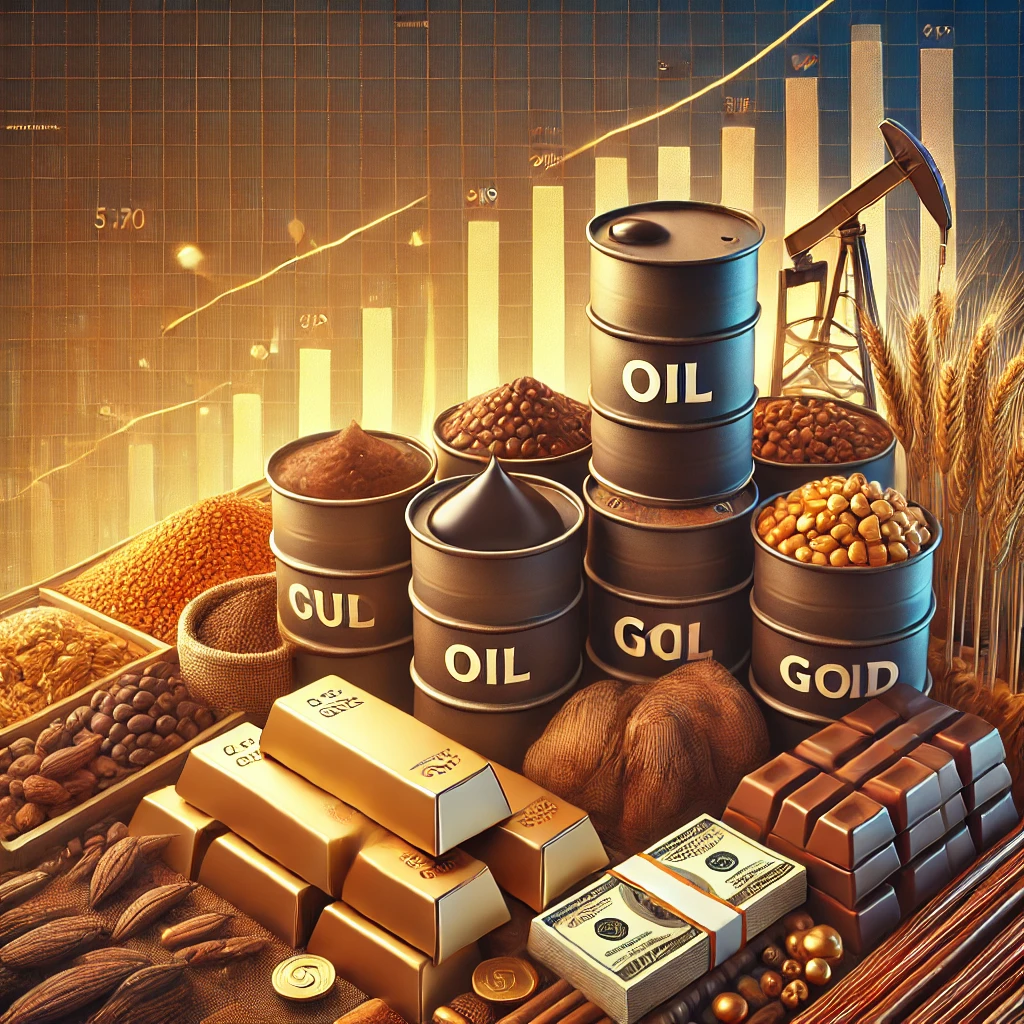Commodity markets
U.S. Commodities Market Weekly Summary – February 14, 2025
The U.S. commodities market experienced notable fluctuations during the week ending February 14, 2025, influenced by geopolitical developments, trade policies, and supply-demand dynamics. This comprehensive overview examines the performance of key commodities, including oil, natural gas, precious metals, and agricultural products, providing insights into the factors driving market trends.

Energy Commodities
Oil: After a three-week decline, oil prices rebounded, supported by rising fuel demand and a delay in the implementation of U.S. reciprocal tariffs. Brent crude futures increased by 0.49%, settling at $75.39 per barrel, while West Texas Intermediate (WTI) crude rose by 0.34% to $71.53 per barrel. Both benchmarks recorded weekly gains of approximately 1%. The postponement of U.S. tariff plans provided temporary relief to markets, while potential peace talks between Russia and Ukraine introduced uncertainty regarding future supply levels.
Natural Gas: The natural gas market remained volatile, with prices influenced by seasonal demand and geopolitical factors. The United States Natural Gas Fund (UNG) reflected this volatility, closing at $19.65, an increase of 2.61% from the previous session. Expectations of colder weather and potential shifts in energy policies contributed to price fluctuations.
Precious Metals
Gold: Gold prices experienced a slight decline due to profit-taking but remained on track for a seventh consecutive weekly gain. Spot gold fell by 1.6% to $2,882.99 per ounce, with a weekly increase of 0.8%. Earlier in the week, gold reached a record high of $2,942.70, driven by concerns over potential global trade wars following U.S. President Donald Trump’s proposal for reciprocal tariffs. The safe-haven appeal of gold persisted amid ongoing geopolitical uncertainties.
Silver: Silver prices mirrored gold’s trajectory, with spot silver declining by 0.3% to $32.27 per ounce. Despite the dip, silver maintained its attractiveness to investors seeking alternatives to gold, especially amid market volatility. The iShares Silver Trust (SLV) closed at $29.31, reflecting a 0.54% decrease from the previous session.
Agricultural Commodities
Corn: Global corn supplies accessible to the market are projected to reach their lowest levels in nearly three decades. Excluding China’s substantial stockpiles, world corn ending stocks for the 2024-25 season are estimated at an 11-year low of approximately 87 million metric tons. This tightening supply is attributed to reduced outputs in key producing regions and increased demand, leading to concerns over future availability and potential price increases.
Coffee: Arabica coffee futures are anticipated to decline by around 30% by the end of 2025. The recent surge to record high prices is expected to curb demand, and early indicators suggest a potentially large Brazilian crop in the upcoming season. Market analysts project that increased supply, coupled with demand adjustments, will exert downward pressure on prices.
Market Influencers
Trade Policies: President Trump’s directive to explore reciprocal tariffs has introduced uncertainty into global trade dynamics. While the immediate implementation has been delayed, markets remain cautious about potential escalations into trade wars, which could impact commodity prices across the board.
Geopolitical Developments: Potential peace negotiations between Russia and Ukraine have significant implications for energy markets, particularly oil and natural gas. The possibility of lifting sanctions on Russian oil could alter global supply chains, influencing prices and market stability.
Economic Indicators: U.S. producer prices increased by 0.4% in January, exceeding expectations and indicating a potential rise in inflation. This development may influence Federal Reserve policies and, subsequently, impact commodity markets, especially those sensitive to interest rate changes.
Investor Outlook
The commodities market’s performance during this week underscores the intricate interplay between geopolitical events, economic policies, and supply-demand fundamentals. Investors are advised to monitor developments in trade negotiations, geopolitical tensions, and economic indicators closely, as these factors are poised to shape market trajectories in the near term. Diversification and a vigilant approach to market signals remain prudent strategies in navigating the current commodities landscape.
Key Commodity Market Updates – February 2025
Disclaimer: This report is for informational purposes only and does not constitute financial advice. Investors should conduct their own research or consult with a financial advisor before making investment decisions.
